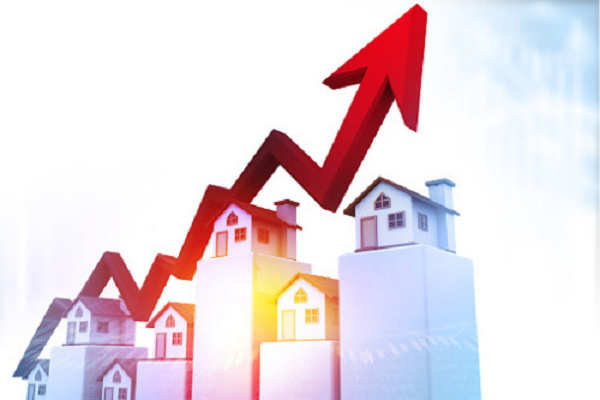UK Property Market’s Seemingly Endless Acceleration Continues

The overwhelming majority of UK homeowners saw the market values of their properties skyrocket throughout the course of last year. Newly released figures from Zoopla indicate an average annual price increase of 7.1%, equating to around £16,000.
Year-on-year, average house prices climbed from £224,800 at the end of 2020 to £240,800 in December 2021. Throughout the course of the year, a total of 1.5 million property transactions were recorded, the highest number of completions since the financial crisis.
In addition, the figures from Zoopla show that house prices increased in almost every UK region at a faster rate than in both 2019 and 2020 combined.
One of the market’s key drivers was the frantic race for space triggered by lockdown restrictions, as buyers abandoned busy urban centres in search of more spacious rural homes with private gardens.
Available inventory was quickly eradicated, leading to astronomic price hikes in desirable areas of the country.
“Such a busy market eroded the number of homes available to buy, as properties were being snapped up so quickly,” said Grainne Gilmore, head of research at Zoopla.
“This imbalance between demand and supply has put upward pressure on prices.”
Stamp duty holiday
The government’s temporary stamp duty holiday also motivated many to make their moves, with savings of up to £15,000 for those who beat the deadline.
Initially set to expire on March 31, the incentive was extended to June and partially continued until the end of September. All of which helped sustain the market’s momentum during a time when many had predicted a gradual slowdown.
Record-low interest rates also played a major role in the housing market’s stellar performance over the course of the past year. Still fixed at just 0.25% for the time being, ultra-low Bank of England base rates are making it cheaper for new and existing mortgage payers to finance home purchases.
However, a base rate as low as 0.25% is entirely unsustainable and will not be around forever. Mortgage payers locking in exceptionally low introductory rates are therefore being warned to expect significant increases going forward as the UK economy returns to strength.
A return to urban living?
When working from home became the new norm during the pandemic, millions exited the UK’s biggest cities in search of more spacious and affordable properties elsewhere. Today, major urban centres like London are seeing a slow but steady return as life gradually edges back to normal.
“We’ve already seen the capital start to awaken from its pandemic property market slumber with a return to the office and the growing demand from foreign buyers, all helping to cultivate early signs of house price prosperity,” commented Guy Gittins, chief executive of estate agent Chesterton’s.
Towards the end of 2021, estate agents reported an increase in buyer inquiries for the London area, up to 12% higher than a year earlier.
How this return to urban living affects broader property prices across the UK remains to be seen, but the race for space in quieter corners of the country is predicted to continue for some time.




 0116 402 7982
0116 402 7982